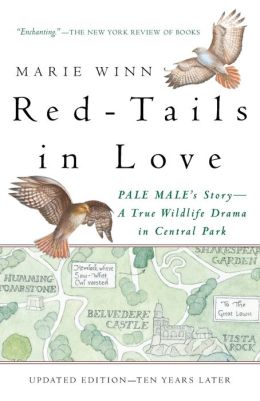‘Tis the season for lists and reminiscing, so greenmomster is going to indulge! Here’s the list of my 10 favorite green activities for 2012. I’d love to hear about yours too – be sure to post them on Facebook!
10) Starting out the New Year at our favorite park – Sky Meadows – with our annual New Years Day hike!
9) Being chosen as a Climate Mama on the Climate Mama website, a website and organization dedicated to reducing human impacts on our climate!
8) Clamming on Block Island RI! What a great day – hanging out with our favorite environmental science teacher, raking up clams, and learning about sustainability.
7) Adopting a stream! OK, maybe our stream wasn’t quite as healthy as we thought, but it was a great experience and we learned a lot. And hope springs eternal – we’re checking out our new stream in January 2013!
6) Goin’ Ape! Swinging from ropes, practicing our tarzan yells, and zip-lining!
5) Volunteering at Sky Meadows State Park with the family! Whether we’re hiking the trails for trail maintenance, designing a calendar, taking pictures at park events, or collecting acorns, any day at Sky Meadows is a great day!
4) Camping at Bear Creek Lake State Park! Canoeing, fishing, archery, s’mores, and glamping in my new BIG tent with the family – what could be better than that?
3) Hiking and biking on Bull Island SC! We’ve still got that SC beach buzz going as we enjoy our sand dollar Christmas tree ornaments.
2) Attending the anti-fracking rally on the U.S. Capitol grounds this summer! Craft supplies for our protest signs – $3; parking near the rally – $20; sunscreen for the incredibly hot day – $10; hearing my son say “Hey Mom, I never knew there were so many people like
1) Definitely one of my favorite green activities every year – watching the baby loggerhead sea turtles dash from their nests to the ocean!
Happy New Year to all of the greenmomsters out there! Here’s to a green 2013!


 sea ice due to climate change. The ringed seals (Phoca hispida) (photo from Paul Nicklen at
sea ice due to climate change. The ringed seals (Phoca hispida) (photo from Paul Nicklen at 
 I just finished reading a great book –
I just finished reading a great book –  of the recipes (like the yummy banana bread recipe) frequently. So enjoy a little southern zest this Christmas week with some Tex-Mex quiche!
of the recipes (like the yummy banana bread recipe) frequently. So enjoy a little southern zest this Christmas week with some Tex-Mex quiche!
 The asian small-clawed otter (Aonyx cinerea) is the smallest of the world’s 13 otter species, and like most otters, very cute. If you’ve been lucky enough to see these guys playing at a zoo (or really lucky and seen them in the wild), you know that they’re very entertaining to watch. These little otters (6 to 12 lbs) get their name from the fact that their feet are not fully webbed to the ends of their toes, which allows them more dexterous movement as they handle their prey, which includes primarily crabs, molluscs, and fish caught in their habitat of freshwater and coastal streams and rivers. The small clawed otter lives in family groups of up to 12 individuals. It is found in Indonesia, southern China, southern India, the Philippines, and Southeast Asia. It is currently listed as “vulnerable” by the
The asian small-clawed otter (Aonyx cinerea) is the smallest of the world’s 13 otter species, and like most otters, very cute. If you’ve been lucky enough to see these guys playing at a zoo (or really lucky and seen them in the wild), you know that they’re very entertaining to watch. These little otters (6 to 12 lbs) get their name from the fact that their feet are not fully webbed to the ends of their toes, which allows them more dexterous movement as they handle their prey, which includes primarily crabs, molluscs, and fish caught in their habitat of freshwater and coastal streams and rivers. The small clawed otter lives in family groups of up to 12 individuals. It is found in Indonesia, southern China, southern India, the Philippines, and Southeast Asia. It is currently listed as “vulnerable” by the 
 The Chesapeake Bay’s menhaden (Brevoortia tyrannus) (photo from NOAA, 2012) scored a big victory last week, when the Atlantic States Marine Fisheries Commission (ASMFC) voted to reduce the catch of Atlantic menhaden by 20% per year. The goal is to reduce overfishing of this important species and leave more individuals to mature to year three, when they’ll be ready to reproduce. Menhaden are a small, oily fish historically used for bait. Recently, though, menhaden fishing has become a big industry, supplying fish for the booming Omega 3 fatty acid market. Menhaden are currently fished using spotter planes and huge
The Chesapeake Bay’s menhaden (Brevoortia tyrannus) (photo from NOAA, 2012) scored a big victory last week, when the Atlantic States Marine Fisheries Commission (ASMFC) voted to reduce the catch of Atlantic menhaden by 20% per year. The goal is to reduce overfishing of this important species and leave more individuals to mature to year three, when they’ll be ready to reproduce. Menhaden are a small, oily fish historically used for bait. Recently, though, menhaden fishing has become a big industry, supplying fish for the booming Omega 3 fatty acid market. Menhaden are currently fished using spotter planes and huge  This week’s endangered species isn’t listed under the ESA yet, but many experts believe the U.S. Fish and Wildlife Service should consider listing the American Eel (Anguilla rostrata) (photo copyright Garold W. Sneegas) under the ESA. Found from Greenland to Brazil, these fish have a fascinating life cycle. They’re catadromous, which means they do things opposite of the anadromous salmon. They spawn in the ocean and live most of their lives in estuarine or freshwater. Here’s how it works (USFWS 2009):
This week’s endangered species isn’t listed under the ESA yet, but many experts believe the U.S. Fish and Wildlife Service should consider listing the American Eel (Anguilla rostrata) (photo copyright Garold W. Sneegas) under the ESA. Found from Greenland to Brazil, these fish have a fascinating life cycle. They’re catadromous, which means they do things opposite of the anadromous salmon. They spawn in the ocean and live most of their lives in estuarine or freshwater. Here’s how it works (USFWS 2009):

 other animals caught in their tentacles, but they also have a symbiotic relationship with algae, taking advantage of the products of algae’s photosynthesis – very clever lifestyle indeed! The staghorn are tropical corals found in the Atlantic ocean, Caribbean Sea, and Gulf of Mexico. The biggest threat to this species of coral is disease, but hurricanes, predation, bleaching, temperature and salinity variation, and low genetic diversity (that’s what happens when you reproduce asexually) are also threats.
other animals caught in their tentacles, but they also have a symbiotic relationship with algae, taking advantage of the products of algae’s photosynthesis – very clever lifestyle indeed! The staghorn are tropical corals found in the Atlantic ocean, Caribbean Sea, and Gulf of Mexico. The biggest threat to this species of coral is disease, but hurricanes, predation, bleaching, temperature and salinity variation, and low genetic diversity (that’s what happens when you reproduce asexually) are also threats.

